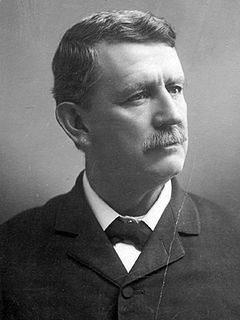
The Governor of Michigan is the chief executive of the U.S. state of Michigan. The current governor is Gretchen Whitmer, a member of the Democratic Party, who was inaugurated on January 1, 2019, as the state's 49th governor. She is eligible for a second term under Michigan's term limits, which limit a governor to only two, four-year terms.

The Governor of Texas is the head of the executive branch of Texas's government and the commander-in-chief of the state's military forces. The governor has the power to either approve or veto bills passed by the Texas Legislature, and to convene the legislature. The governor may grant pardons in cases other than impeachment or in the case of treason, with permission by the legislature. The current Governor is Greg Abbott.

The governor of North Dakota is the head of the executive branch of government of North Dakota and serves as the commander-in-chief of the state's military forces.

The Governor of the State of South Carolina is the head of state for the state of South Carolina. Under the South Carolina Constitution, the governor is also the head of government, serving as the chief executive of the South Carolina executive branch. The governor is the ex officio commander-in-chief of the National Guard when not called into federal use. The governor's responsibilities include making yearly "State of the State" addresses to the South Carolina General Assembly, submitting an executive budget and ensuring that state laws are enforced.

The Governor of the Commonwealth of Virginia serves as the chief executive of the Commonwealth of Virginia for a four-year term. The current holder of the office is Democrat Ralph Northam, who was sworn in on January 13, 2018.
The Governor of Wisconsin is the highest executive authority in the government of the U.S. state of Wisconsin. The position was first filled by Nelson Dewey on June 7, 1848, the year Wisconsin became a state. Prior to statehood, there were four Governors of Wisconsin Territory.

There have been 90 gubernatorial elections in the state of New York since 1777. The next one will be held on November 3, 2022.

The Lieutenant Governor of Massachusetts is the first in the line to discharge the powers and duties of the office of governor following the incapacitation of the Governor of Massachusetts. The constitutional honorific title for the office is His, or Her, Honor.

The Lieutenant Governor of New Jersey is an elected constitutional officer in the executive branch of the state government of New Jersey in the United States. The lieutenant governor is the second highest-ranking official in the state government and is elected concurrently on a ticket with the governor for a four-year term. Because the position itself does not carry any powers or duties other than to be next in the order of succession, the state constitution requires that the lieutenant governor be appointed to serve as the head of a cabinet-level department or administrative agency within the governor's administration.

The Alabama State Senate is the upper house of the Alabama Legislature, the state legislature of the U.S. state of Alabama. The body is composed of 35 members representing an equal number of districts across the state, with each district containing at least 127,140 citizens. Similar to the lower house, the Alabama House of Representatives, the Senate serves both without term limits and with a four-year term.

The Illinois gubernatorial election of 1848 was the ninth election for this office. Democratic governor Augustus C. French was easily re-elected. This was the first gubernatorial election in Illinois that was held on the same date as the United States presidential election.

Elections in Alabama are authorized under the Alabama State Constitution, which establishes elections for the state level officers, cabinet, and legislature, and the election of county-level officers, including members of school boards.

The 1974 Alabama gubernatorial election took place on November 5, 1974. Incumbent Democratic Governor George Wallace was reelected in a landslide over his Republican opponent, businessman Elvin McCary. Wallace was the first Alabama governor to win election to a second consecutive term, as the state's Constitution was amended in 1968 to allow governors to serve a maximum two elected consecutive terms.

The Virginia gubernatorial election of 1776 was the first gubernatorial election of the newly independent Commonwealth of Virginia. It was held on June 29, 1776, forty-five days after the adoption of the Lee Resolution by the Fifth Virginia Convention asserting the independence of the United Colonies from Great Britain. The election was conducted under the provisions of the Constitution of Virginia, which had been adopted by the convention the same day and went into effect immediately. Patrick Henry, a leading advocate for independence who had served as a delegate to the First Continental Congress, was elected governor by a majority vote, defeating Thomas Nelson, Jr. and John Page.

The 1859 Alabama gubernatorial election took place on August 1, 1859 in order to elect the Governor of Alabama. Democrat Andrew Moore won his second term as Governor.


















